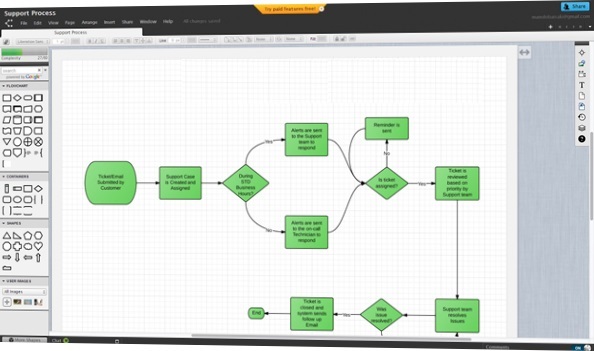

In turn, Lucidchart also has a section as a Revision History, in which you can analyze all the modifications you have made on any flowchart so that it is easy to know when you have made such a change. You can chat in real-time or leave comments on the same documents so that no modifications will be made that have not been previously approved. Lucidchart also has a built-in group chat, thanks to which, if several people are working on the same project or several projects in common, you will be able to communicate privately and directly to analyze all the steps to follow. It is even possible to share them with other users so that they can also make their modifications, thus working collaboratively.

Of course, once you have finished working with your flowcharts with Lucidchart, you can store them on your computer or save the projects within the platform to access them later. You can usually produce mind maps, so it is a perfect tool for studying and making professional presentations. You only need to take a few minutes with Lucidchart to see that we are in the presence of one of the complete applications in its segment, which has all the elements and functions to categorize your content. Once you have completed this initial step, you can start trying your luck with your diagrams, starting from the primary and secondary nodes that arise from them.

Before you start using Lucidchart, we recommend that you take the trouble to create a new account by entering a username, password, and email, because that way, you will not lose the progress you have made.


 0 kommentar(er)
0 kommentar(er)
